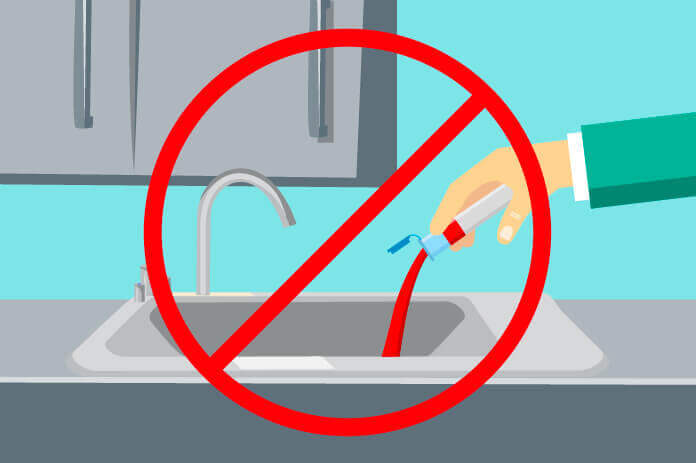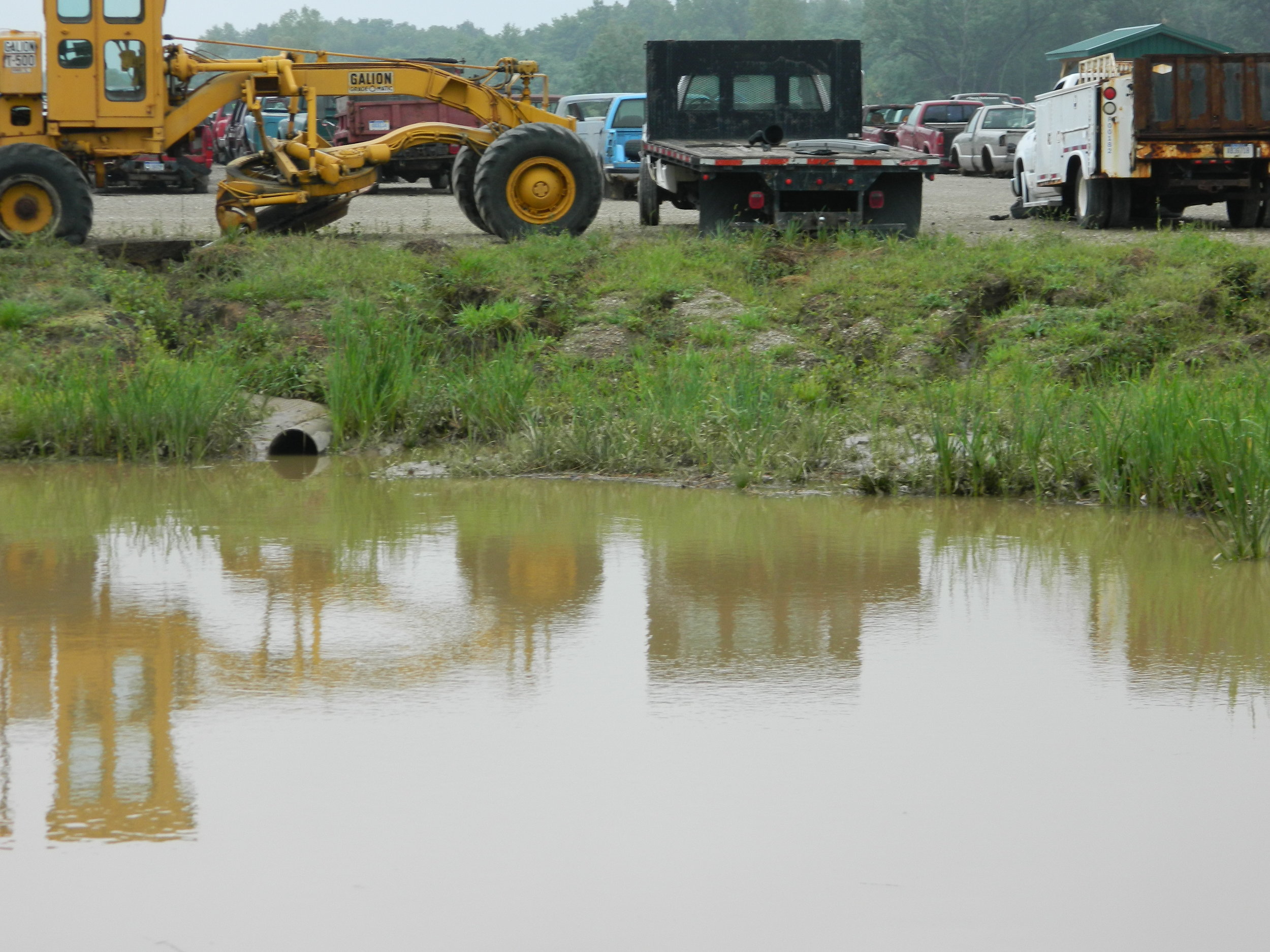Cutting-edge Industrial Wastewater Treatment Solutions: Safeguarding the Environment
Cutting-edge Industrial Wastewater Treatment Solutions: Safeguarding the Environment
Blog Article
Just How Liquid Garbage Disposal Works: A Detailed Introduction of Methods and Technologies Employed

Summary of Liquid Waste Types
The complexity of fluid waste kinds demands an extensive understanding of their characteristics and ramifications for disposal. Liquid waste can broadly be categorized right into numerous kinds, including commercial, metropolitan, farming, and harmful waste. Each classification exhibits unique buildings, requiring certain administration strategies to alleviate environmental and wellness threats.
Industrial fluid waste originates from manufacturing procedures and usually has an array of impurities, such as hefty metals, solvents, and natural substances. Community fluid waste, largely consisting of wastewater from homes and commercial facilities, includes natural issue, nutrients, and virus (industrial wastewater treatment). Agricultural liquid waste, including drainage from ranches, might include fertilizers, chemicals, and animal waste, posturing dangers to water high quality and ecosystems
Unsafe liquid waste is identified by its toxicity, sensitivity, or possible to trigger harm. This category consists of substances like acids, bases, and specific chemicals that necessitate rigorous handling and disposal procedures. Understanding these diverse fluid waste types is vital for developing effective disposal techniques and guaranteeing compliance with environmental guidelines. Proper classification and characterization are important for implementing proper therapy strategies and reducing the damaging effect on public health and wellness and the setting.
Physical Treatment Techniques

Testing is the preliminary step, where larger particles and particles are eliminated from the liquid waste using displays or grates. In sedimentation tanks, heavier fragments clear up at the bottom, forming a sludge layer, while the made clear fluid can be more treated.
Filtration is another important method that includes passing the liquid via permeable materials, such as sand or membrane layers, to record smaller sized fragments. This step enhances the top quality of the fluid, making it appropriate for subsequent therapy procedures.

Chemical Therapy Techniques
Chemical therapy methods are important for properly managing liquid waste, particularly in resolving dissolved and colloidal impurities that physical techniques might not effectively remove. These methods make use of numerous chemical agents to reduce the effects of, precipitate, or transform unsafe compounds into much less damaging kinds.
One common technique is coagulation and flocculation, where chemicals such as alum or ferric chloride are included to advertise the aggregation of put on hold fragments. This process improves sedimentation, permitting for much easier removal of the resulting sludge. Additionally, oxidation processes, employing agents like chlorine or ozone, are utilized to break down complicated natural substances and pathogens, making the waste much safer for discharge or more therapy.
Neutralization is an additional vital strategy, which readjusts the pH of acidic or alkaline waste streams to neutral degrees, avoiding prospective harm to downstream systems and the atmosphere. In addition, progressed oxidation processes (AOPs) utilize combinations of oxidants and ultraviolet light to degrade consistent contaminants, accomplishing a greater degree of therapy performance.
Biological Therapy Procedures
Organic therapy procedures play an important function in the administration of fluid waste by using microbes to decompose raw material and reduce pollutant levels. These processes can be broadly classified right into anaerobic and cardio therapies, each using certain microbial areas to attain reliable waste degradation.
Cardiovascular treatment involves using oxygen to facilitate the failure of natural products by microorganisms. This procedure is generally applied in turned on sludge systems, where aeration tanks give a helpful atmosphere for microbial growth, leading to the oxidation of natural contaminants. The resultant biomass can be separated from dealt with effluent with sedimentation.
In contrast, anaerobic treatment takes place in the lack of oxygen, depending on various bacteria to damage down raw material. This method is particularly useful for high-strength waste, as it produces biogas, a renewable resource source, while reducing sludge production. Technologies such as anaerobic digesters are frequently utilized in industrial and metropolitan applications.
Both cardiovascular and anaerobic organic treatments not just minimize the ecological influence of fluid waste however also facilitate source recuperation, making them important parts of lasting waste administration techniques. Their flexibility, effectiveness, and efficiency support their widespread execution throughout various fields.
Emerging Technologies in Disposal
Innovative techniques to liquid garbage disposal are quickly advancing, driven by developments in modern technology and a raising focus on sustainability. Among these arising innovations, membrane bioreactors (MBRs) have actually acquired grip for their capacity to combine organic therapy with membrane layer purification, resulting in top quality effluent that can be recycled in various applications. MBRs make it possible for smaller footprints and next page more efficient operations compared to standard systems.
Another promising advancement is using anaerobic digestion integrated with nutrient healing modern technologies, which not just treats liquid waste but also creates biogas and recuperates beneficial nutrients like nitrogen and phosphorus. This dual benefit boosts resource effectiveness and minimizes ecological influence.
In addition, advanced oxidation procedures (AOPs) are being taken on for the deterioration of intricate natural toxins. These methods utilize powerful oxidants and drivers to damage down contaminants at the molecular degree, using a highly effective option for difficult waste streams.
Additionally, the combination of artificial intelligence and artificial intelligence in waste monitoring systems is enhancing operational performance and anticipating maintenance, resulting in lowered prices and enhanced ecological conformity. These innovations reflect a significant change in the direction of even more effective and sustainable liquid garbage disposal methods.
Final Thought
In final thought, efficient fluid garbage disposal requires a detailed understanding of various methods and this post technologies. The assimilation of physical, chemical, and biological therapy approaches makes certain the reliable management of diverse waste kinds. Furthermore, the appearance of ingenious innovations improves therapy efficiency and promotes sustainability in waste management practices. By constantly advancing these methods, it becomes feasible to address the growing difficulties linked with liquid waste, ultimately contributing to environmental management and resource recuperation.
Fluid waste disposal is a crucial facet of ecological management, calling for a comprehensive understanding of various strategies and innovations tailored to different waste kinds. Fluid waste can extensively be classified into numerous types, consisting of industrial, metropolitan, agricultural, informative post and unsafe waste. Agricultural liquid waste, consisting of overflow from ranches, might include fertilizers, chemicals, and animal waste, presenting threats to water high quality and ecosystems.
Numerous physical therapy techniques play a critical duty in handling liquid waste efficiently - industrial wastewater treatment.In verdict, reliable fluid waste disposal requires a comprehensive understanding of different techniques and innovations
Report this page